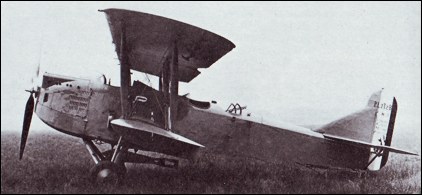 |
Levasseur PL 71926 |  |
| TORPEDO-BOMBER | Virtual Aircraft Museum / France / Levasseur |
 |
After the unsuccessful PL 6 two-seat fighter biplane, Levasseur's only design for the French army, the company turned to the task of providing a replacement torpedo-bomber for the PL 2. The prototype Levasseur PL 7 which followed was a development of the PL 4, a two-seat sesquiplane spanning 18.00m which was burdened by a complexity of wing bracing struts. Powered initially by a 410kW Farman 12We engine, the PL 7.01 was flown subsequently with both Hispano- Suiza and Renault powerplants; the wing struts were redesigned, the structure simplified, and the fin modified. Test flying in this revised form was resumed in 1928, two years after the prototype had first flown. A series of 15 aircraft was ordered in 1929. Nine were delivered with the 18m wing but the French admiralty, uncertain of the more effective wing design, ordered five of the remaining aircraft to be delivered with 16.50m span wings of varying areas, the final machine having a span of 17.25m. The various PL 7s went into service with Escadrille 7B1 on the carrier Beam from July 1930, and after comparative tests the 16.50m span wing with square-cut tips was selected for the definitive PL 7 T2B2b, the tips of the upper wing being hinged to fold downwards to fit the lifts aboard the Beam. Ten of the original PL 7s were modified to this new configuration and 30 new aircraft were ordered. When vibration problems resulted in the disintegration of two PL 7s in flight the type was grounded from June 1931. With strengthened wing bracing, reinforced engine bearers and three-bladed propellers they were returned to service from September 1932 onwards. In this final modified version the PL 7 had a maximum speed of 170km/h and maximum take-off weight of 3950kg. Armament comprised two 7.5mm machine-guns on a ring mounting operated by the observer, plus either a 670kg Type 400 torpedo or up to 510kg of bombs. Although totally obsolete, the PL 7 was still in first-line service aboard the Beam when war broke out in September 1939. A PL 7T transport displayed at the 1926 Salon de I'Aeronautique was in fact a PL 4 with a Gnome-Rhone Jupiter 9ab radial and a deepened fuselage accommodating pilot and mechanic in side-by-side open cockpits, and with an enclosed cabin for six passengers. The PL 7T never flew and was scrapped when the salon closed.
|  COMPANY PROFILE | |||||||
 |

|
